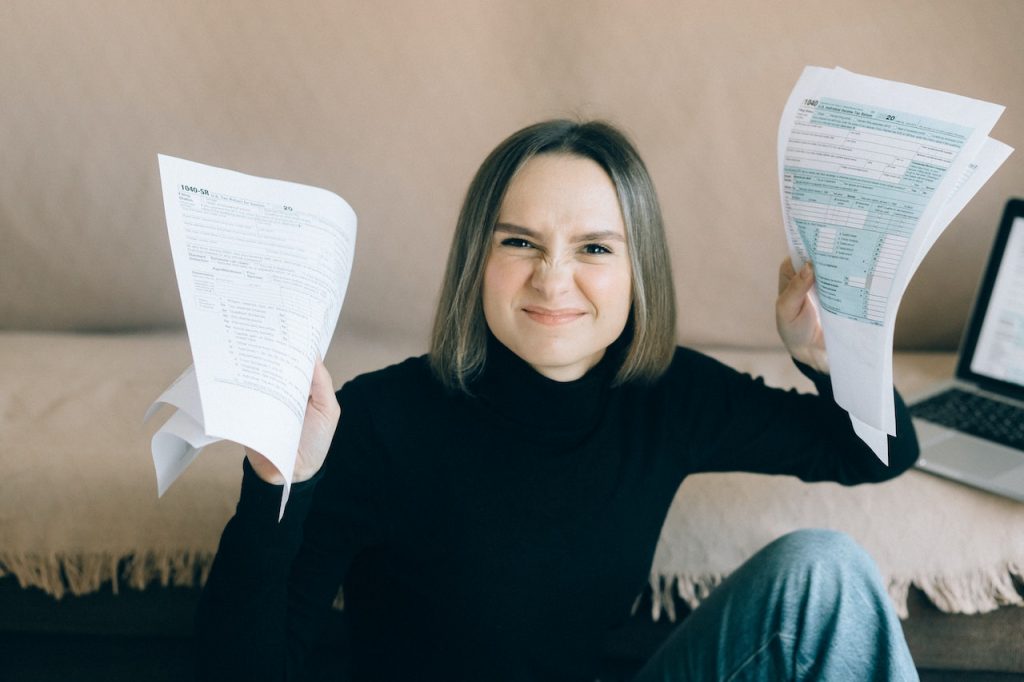Debt-Free Journey: If you are tired of burdening your life with debt and eager to embark on a debt-free journey, then you have come to the right place. In this article, we’ll guide you through the essential first steps toward achieving financial freedom by eliminating debt. By understanding the impact of debt, developing effective strategies and maintaining discipline, you can pave your way to a brighter financial future.
Understanding Debt and Its Impact on Financial Freedom
A loan is a financial obligation that arises when you borrow money from a lender, such as a bank or credit card company, with the promise of periodic repayment. While it may provide temporary relief or help make an important purchase, the loan often comes with high interest rates and monthly payments that can put a strain on your finances. Over time, excessive debt can hinder your ability to save, invest, and achieve long-term financial goals.
Living with debt means that a portion of your income is dedicated to repaying the amount borrowed, leaving you with less money for essential expenses, savings, and investments.
It also limits your financial flexibility and increases your risk of falling into a debt cycle as the interest charges keep piling up. To break free from this cycle and achieve financial freedom, it is important to take the first step towards becoming debt free.
Recommended Blog: Smart Money Moves: How to Financially Prepare for Your First Home Purchase
Debt-Free Journey: Where to Start

Embarking on a debt-free journey requires careful planning and a strategic approach. Here are some essential steps to get you started on the path to financial freedom:
Assess Your Current Financial Situation
The first step in any debt-free journey is assessing your current financial situation. Take a complete list of all your loans, including credit card balances, student loans, car loans and any other outstanding loans. Note the interest rates, minimum payments and total balance for each loan.
Next, calculate your monthly income and expenses. This will give you a clear understanding of your cash flow and how much you can allocate towards loan repayment. By getting a comprehensive overview of your finances, you’ll be better equipped to develop a personal loan repayment plan.
Create a Budget and Stick to it
A budget is a powerful tool that can help you take control of your finances and accelerate your journey toward a debt-free life. Start by listing all of your sources of income, and then categorize your expenses into fixed expenses (such as rent or mortgage payments) and variable expenses (such as groceries, entertainment, and transportation).
Identify areas where you can cut back and reduce costs. This could include packing a lunch instead of eating out, canceling unnecessary memberships, or negotiating lower rates for services. Set aside a portion of your monthly income specifically for loan repayment and make sure it becomes a non-negotiable expense in your budget.
Prioritize Debt Repayment Strategies
With your budget in hand, it’s time to prioritize your debt repayment strategies. Debt snowball and debt avalanche are two popular methods.
- Debt Snowball: This approach involves paying off your debts starting with the smallest balance while making minimum payments on other debts. Once the smallest debt is paid off, you move on to the next smallest debt, gradually building momentum as you eliminate each balance. The debt snowball method gives you a psychological boost by giving you quick wins and increased motivation.
- Debt Avalanche: With the debt avalanche method, you focus on paying off the debt with the highest interest rates. By tackling a higher-interest loan, you reduce the overall interest you pay over time. Although it may take longer to see tangible results than with the debt snowball method, the debt avalanche can save you more money in interest payments.
Consider which approach best matches up with your financial situation and preferences. Whatever method you choose, consistency and commitment are key.
Explore Debt Consolidation Options
If you find yourself saddled with multiple loans with different interest rates and payment due dates, debt consolidation can be a helpful strategy.
Debt consolidation involves combining your debts into a single loan with a lower interest rate, making it easier to manage and potentially lowering your monthly payments. There are several debt consolidation options available:
- Personal Loan: You can apply for a personal loan from a bank or credit union to pay off your current loans. Personal loans often have fixed interest rates and a structured repayment plan.
- Balance Transfer: Some credit card companies offer balance transfer promotions with low or no interest rates for a limited period of time. Transferring a higher-interest credit card balance to a lower-rate card can save you money on interest payments.
- Home Equity Loan or Line of Credit: If you own a home, you may be able to use the equity in your home to obtain funding through a home equity loan or line of credit.
Remember, debt consolidation is not a quick fix but a tool to streamline your loan payments. It is important to address the root causes of debt and commit to responsible financial habits to avoid falling back into the cycle of debt.
Check : Mastering Your Finances: A Guide to QuickBooks for Small Business Owners
Overcoming Challenges along the Way
Debt-free travel is not without its challenges. It requires discipline, persistence and a willingness to make sacrifices. Here are some strategies to help you overcome common roadblocks:
Maintaining Discipline and Motivation
Staying motivated during your debt-free journey can be difficult, especially when progress seems slow or when unexpected expenses arise. To stay on track, set achievable short-term goals and celebrate small victories along the way. This may include paying off specific debts or reaching a milestone in reducing your overall debt.
Additionally, seek support from friends, family or online communities where you can share your progress, receive advice and encouragement. Remember why you started this journey in the first place and have visual reminders of your financial goals to stay focused.
Seek Professional Advice
If you feel overwhelmed or unsure about the best course of action, don’t hesitate to seek professional advice.
Financial advisors or credit counseling agencies can provide personalized guidance based on your unique financial situation. They can help you develop a convenient loan repayment plan, negotiate with creditors, and provide valuable insight into managing your finances effectively.
Benefits of a Debt Free Lifestyle

Becoming debt-free is more than just eliminating financial obligations. It opens up a world of opportunities and benefits that contribute to long term financial freedom. Here are some of the benefits of living a debt-free lifestyle:
- Financial Freedom: Eliminating debt frees up your income, allowing you to allocate money toward savings, investments, or other financial goals. It provides a sense of control and empowers you to make decisions based on your values and aspirations rather than being dictated by loan obligations.
- Less Stress: Debt can be a significant source of stress and anxiety. By eliminating debt, you will experience a significant reduction in financial stress, which will lead to improved mental and emotional well-being.
- Better Credit Score: Consistent repayment of your loans and becoming debt free can have a positive impact on your credit score. A high credit score opens doors to better borrowing options, lower interest rates and better financial opportunities in the future.
- Flexibility and Opportunities: Being debt-free allows you to take advantage of opportunities that may come your way, such as starting a business, pursuing further education or taking career risks. It gives you the flexibility to choose according to your long term goals.
- Peace of Mind: The knowledge that you are not burdened with debt brings a sense of peace and security. You can sleep well at night knowing that you have a solid financial foundation and are prepared for the unexpected.
You Definitely need to check: Secure Your Future: Why Investment is the Key to Financial Stability
Frequently Asked Questions (FAQs)
01. What is Debt Free Travel?
Debt-free journey refers to the process of eliminating all outstanding debts and achieving financial freedom. This includes developing strategies, making lifestyle changes, and maintaining discipline to pay off debt and avoid falling back into debt.
02. How long does it take to become debt free?
The timeline for becoming debt-free varies based on individual circumstances, including the total amount of debt, income level, and debt repayment strategies. It can take months to years to achieve full debt relief.
03. Should I focus on paying off debt or saving for emergencies?
It is important to strike a balance between paying off debt and building an emergency fund. Start by setting aside a small amount each month for emergencies while focusing on paying off high-interest debt. Once your high-interest debt is under control, you can increase your emergency fund contribution.
04. Can I still enjoy life while traveling debt-free?
Absolutely! While going on a debt-free trip may require some sacrifice and budgeting, that doesn’t mean you have to completely deprive yourself. Find ways to enjoy life within your means, such as pursuing low-cost hobbies, cooking at home, or taking advantage of free community events.
05. Is it possible to be debt free on a low income?
Yes, it is possible to be debt free on a low income. It can take more time and strategic planning, but by creating a budget, prioritizing debt, and getting help when you need it, you can make significant progress toward financial freedom.
Embarking on a debt-free journey is an essential first step towards achieving financial freedom. By understanding the impact of debt, developing an effective strategy and maintaining discipline, you can take control of your finances and pave the way for a brighter future.
Remember, becoming debt free requires commitment, patience, and a willingness to make necessary changes in your financial habits. With determination and the right tools, you can overcome challenges and live a debt-free lifestyle that brings peace of mind and opens the door to endless possibilities. Begin your debt-free journey today and take control of your financial destiny.
Also Check: 10 Tips for Managing Your Finances with QuickBooks
Get The Latest Information On Business, Finance, Investment, Brand Building, Lifestyle, Entertainment, And Billionaire Quotes On Edueasify.
